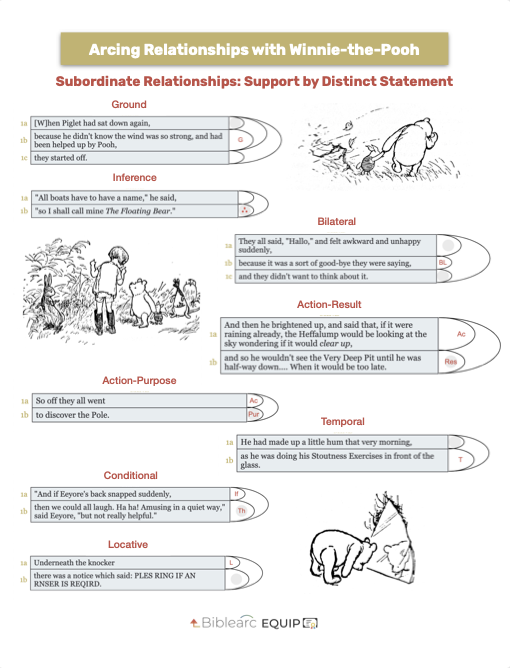Lesson 2 | How Do We Arc?
The Relationship Categories
Understanding the logical relationship categories will help you understand each of the relationships more precisely, and will serve you to decide on the proper logical relationship when you are stuck.

The Coordinate logical relationships in Arcing are used to indicate the relationship between two or more propositions which each make their own independent contribution. That is to say, while the propositions will certainly relate to one another, neither is serving the other, neither is strengthening the other, neither is completing the other, neither is qualifying the other. In this category, each proposition is making a separate point.

The first subcategory of the Subordinate relationships is Support by Restatement. All the relationships in this category indicate that one of the two propositions is—in some fashion—pointing back to and telling us more about the other proposition. With Action-Manner, the manner is telling us more about the verb of the action. With Comparison, we learn more about one proposition by the other showing us what it is like. The negative proposition in Negative-Positive is clarifying the positive proposition by contrast, and the question proposition of a Question-Answer relationship is there to give us a context for the answer. Finally, Idea-Explanation is the catch-all, with the explanation proposition explaining something from the idea proposition.

The next subcategory of Subordinate relationships is Support by Distinct Statement. With each relationship in this category, we are presented with a new and distinct idea that is serving to convey a logical connection. You know you are dealing with a relationship in this category when you can identify two clearly different ideas at play, in which one is supporting, completing or qualifying the other.

The final subcategory of Subordinate relationships is Support by Contrary Statement. The relationships in this category could also fit the description of Support by Distinct Statement above, but are set apart since the distinct element is expressed in a very particular way. With these relationships, one proposition rubs against the other, and in this strange way supports the other. With Concessive, one proposition supports the other by expressing a contrary point whose acknowledgement reinforces the other proposition. Situation-Response is similar in the fact that the response is surprising or counter-intuitive—that is, contrary—to the situation.

 Winnie the Pooh Teaches Arcingpdf
Winnie the Pooh Teaches ArcingpdfRead examples of each of the 18 logical relationships, taken from the original books by A.A. Milne, as a fun way to increase your understanding of each category!